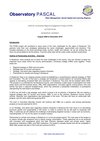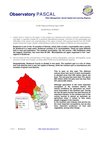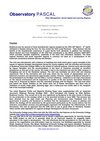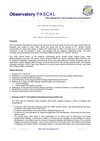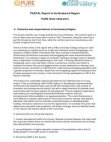Buskerud County, Norway
Buskerud is one of the 19 counties of Norway, where Oslo is both a municipality and a county. So Buskerud is a legal entity. Buskerud consists of 21 municipalities. These are quite different both in area and population. The smallest municipality, Flå, has around 1 000 inhabitants while the biggest; Drammen, has more than 60 000. Municipalities are again organised in five “sub” regions in Buskerud.
Geographically, Buskerud County is divided in two parts. The southern part is a mix of urban and rural districts and is near the capital of Norway, while the northern part is mountainous and consists of typical rural districts. 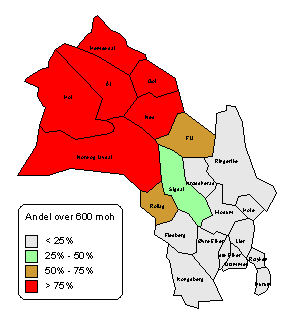
This is seen on this map: The different colours show how much of each municipality is situated more than 600 meters above sea level. The red area has more than 75% above 600 meters while the grey area has less than 25% above 600 meters.
Although agriculture is the most important occupation in the northern district, the natural conditions for agriculture are much more favourable in the southern part. During the last 30 years tourism has also become an important industry. In the northern part of the county tourism is almost as important as agriculture when it comes to how many people engaged in the industry. In the southern part industry and service are the most important occupations, but we also have important producers of fruit and vegetables, among other things.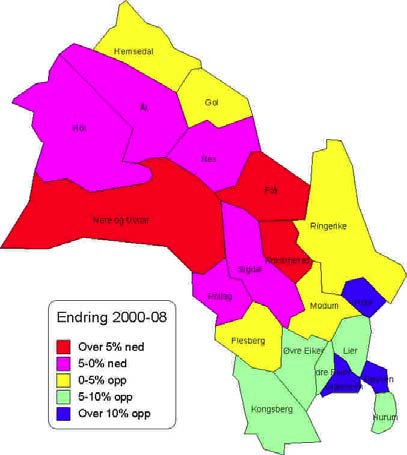
We find almost the same structure regarding changes in population. In the southern part the population is growing, while the northern part has a depopulation. The map shows population changes from 2000 to 2008. The red areas have depopulation with more than 5%, while the blue areas have a growth with more than 10%. All municipalities in the rural district have less growth in population than the average of the county and the country. In most of the municipalities in the northern region the elderly population is much larger part than in the southern part. The population in this area is growing older every year. This is due to several reasons.
The birth rate is a little lower in the rural districts than in the urban. Combined with an old population, this gives a negative balance between births and deaths.
Another reason is that most of the municipalities in the northern region have a negative balance in migration. A great part of those emigrating is young people, while those who are immigrating are on the average age.
This is part of the same development as we can see in Norway as a whole, and probably all over Europe. Young people tend to move to urban areas. Students apply primarily at large universities with a variety of programs and not all of them return home after having finishes their education.
When it comes to average income the picture is more complex. Although average income is lower in the northern part it is increasing faster in most of these municipalities than in the rest of the county. One of the explanations of this is that if we go ten years back the average income was rather low. The general growth of wealth in the Norwegian society has also reached these areas, but they still have a way to go. Another explanation is that some of the inhabitants have had special high income due to sale of land, and building second homes for people from the urban districts to very high costs. People live and commute within a radius of 40 - 50 kms. Due to the actual financial crises this building boom has now almost stopped.
 Printer-friendly version
Printer-friendly version- 331 reads

